Huge Outfall Project Ends Nearly Seven Decades of Untreated Effluent Being Dumped in Ocean at Mexican Border

For years, the sewage treatment plant in Tijuana, MX, did not have the capacity to treat all the sewage it receives, resulting in raw sewage flowing from the Tijuana River into the South Bay region near San Diego, CA, causing public health and safety problems.
San Diego decided that the only way to cope with this raw sewage problem was to treat it. The City of San Diego in collaboration with the International Boundary and Water Commission and other stakeholders-such as the Mexican government-designed and constructed a primary treatment plant to supplement Tijuana's plant and a $140 million pipeline that carries treated effluent 3.5 miles out to the ocean floor at a depth of 95-ft.
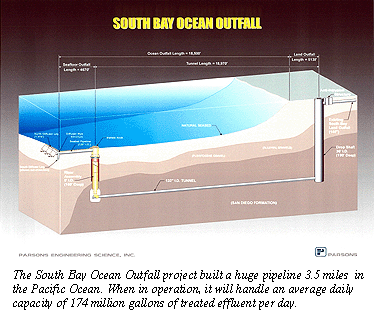
Project wins coveted ASCE award
The engineering challenges that were met during the construction of the outfall won an Outstanding Civil Engineering Achievement Award of Merit from the American Society of Civil Engineers this year.
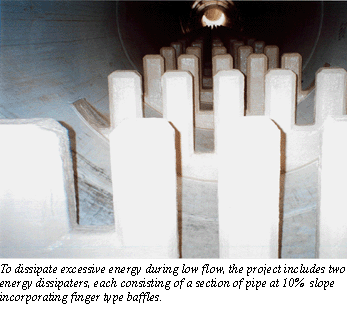
The award was presented to the owner of the project, the City of San Diego Metropolitan Wastewater Department and the International Boundary and Water Commission, recognizing the project for international cooperation and engineering ingenuity.
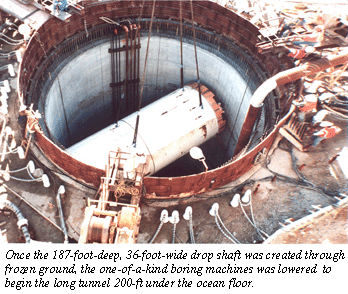
"This project ended nearly seven decades of untreated effluent passing between the U.S. and Mexico coasts, demonstrating how cooperation among diverse international stakeholders can enhance the economic growth of a border region and protect public health and the fragile coastal environment, " said ASCE President Delon Hampton, Ph.D., P.E.
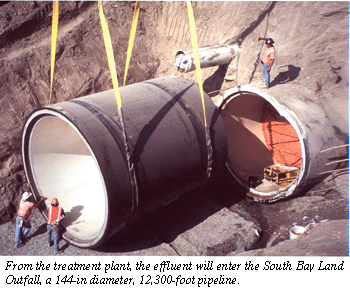
Trenching on ocean floor part of project
The project include trenching on the ocean floor, the installation of a concrete pipe and the use of a global positioning unit hooked to a satellite to enable workers to see where they were going and what they were doing while working underground.
The project is expected to lead to a host of environmental and other benefits including an increase in the property values in the South Bay region, an increase in tourism and enhanced public health and safety.
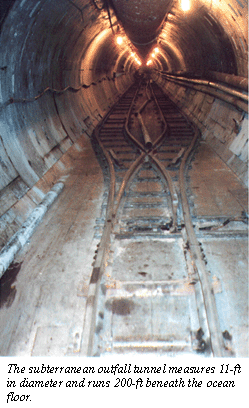
Each year since 1960, OCEA awards have been presented to extraordinary engineering projects for their contribution to community well being, resourcefulness in planning and solving design challenges, and use of innovative construction methods. Earlier this year, a six-member panel of prominent engineers and journalists, including Public Works Online Editor Joyce Everhart Jungclaus, selected the project as one of the winners from among 27 submissions nominated by ASCE district directors from across the U. S.
The South Bay Ocean Outfall Project is the 19th project in California to receive an OCEA award during the past 40 years. Past OCEA winners California include the Los Vaqueros Project of Concord (OCEA in 1999); the Muni Metro Turnback of San Francisco (Award of Merit, 1998); and the Sacramento Regional Wastewater Management Program (Award of Merit, 1984).
Founded in 1852, ASCE represents more than 123,000 civil engineers worldwide and is America's oldest national engineering society.
Edited by Joyce Everhart Jungclaus, Editor, Public Works Online
Information provided by ASCE
